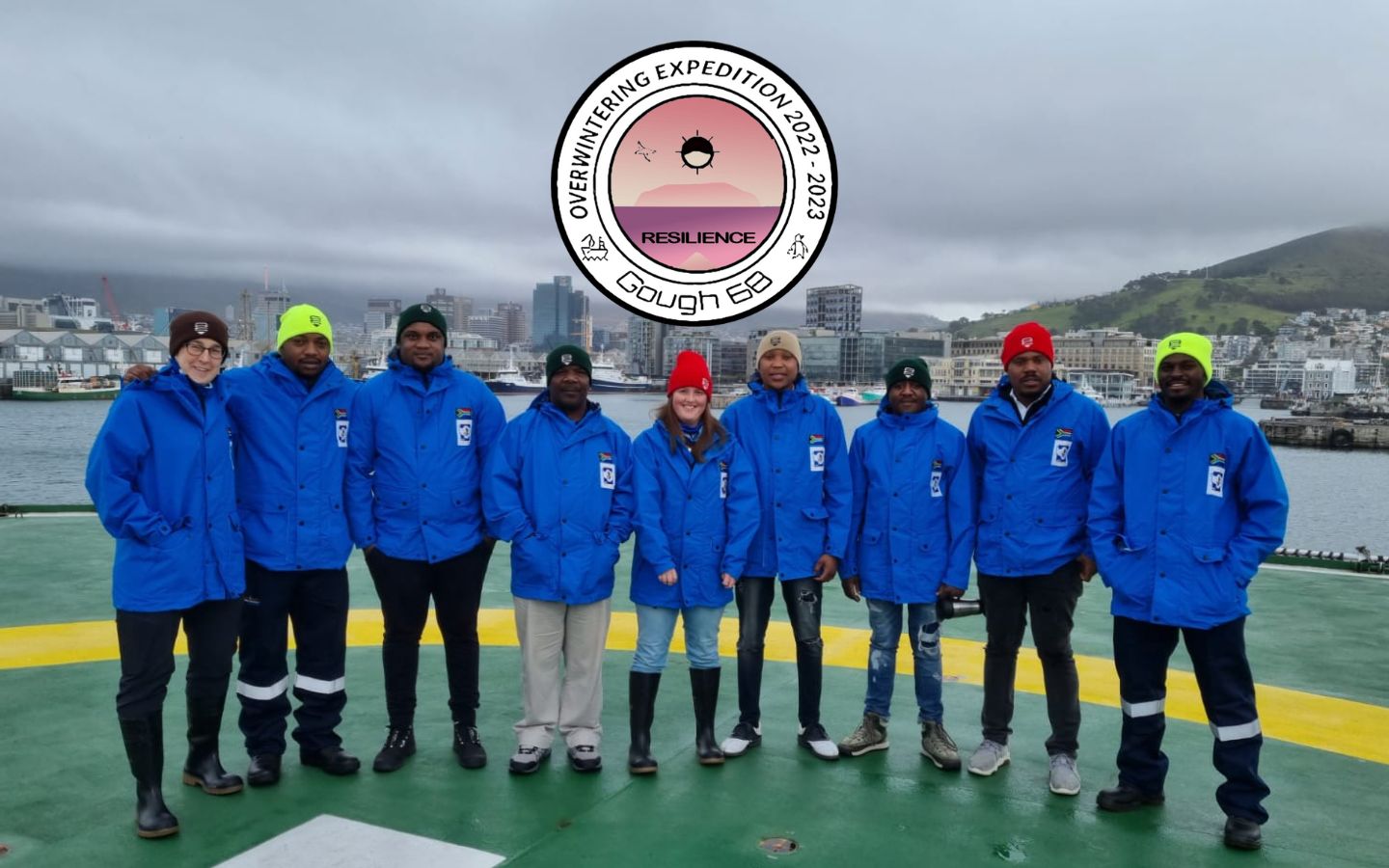 The G68 Team (Left to Right): Lucy Dorman, Joyfull Ntobeko Gaju, Philani Siyabonga Ngcobo, Sibusiso Maduna, Rebekah Goodwill, Mphumzi Brooklyn Zilindile, Eddy Mfezeko Xaki, Khuliso Collen Maphaha, Mayembe Kapenda; photograph courtesy of Antarctic Legacy of South Africa
The G68 Team (Left to Right): Lucy Dorman, Joyfull Ntobeko Gaju, Philani Siyabonga Ngcobo, Sibusiso Maduna, Rebekah Goodwill, Mphumzi Brooklyn Zilindile, Eddy Mfezeko Xaki, Khuliso Collen Maphaha, Mayembe Kapenda; photograph courtesy of Antarctic Legacy of South Africa
The South African National Antarctic Programme (SANAP) has announced the 68th Gough Island overwintering team (G68) has departed to Gough Island to continue long-term scientific programmes.
Meteorologists will maintain meteorological records for the South African Weather Service (SAWS). This remote weather station has been manned and providing data for forecasting and research on a daily basis since 1956.
Seabird monitoring by the UK’s Gough Island Restoration Programme (GIRP) will also continue. The introduction of House Mice to the island in the early 19th century has devastated some local seabird populations (including ACAP-listed species) which have become a source of food for these small yet resourceful creatures. GIRP’s ambitious objective is to eradicate House Mice from the island and prevent the extinction of seabird species affected by the invasive mice, such as the Critically Endangered Tristan Albatross Diomedea dabbenena. The project suffered a setback earlier this year when footage of a mouse was captured by a camera trap, dashing hopes that the eradication attempt had been a success. Further mice were then discovered on the island. Efforts are now underway to understand what might have enabled mice to survive the eradication operation.
The team departed on 20 August 2022 aboard the South African Antarctic research and supply vessel the S.A. Agulhas II which briefly stopped at Tristan da Cunha to offload passengers and cargo before making the onward journey to Gough. G68 will be stationed on Gough Island for approximately 13 months, replacing the G67 team members who are close to finishing their stint.
Posted 26 August 2022

 English
English  Français
Français  Español
Español 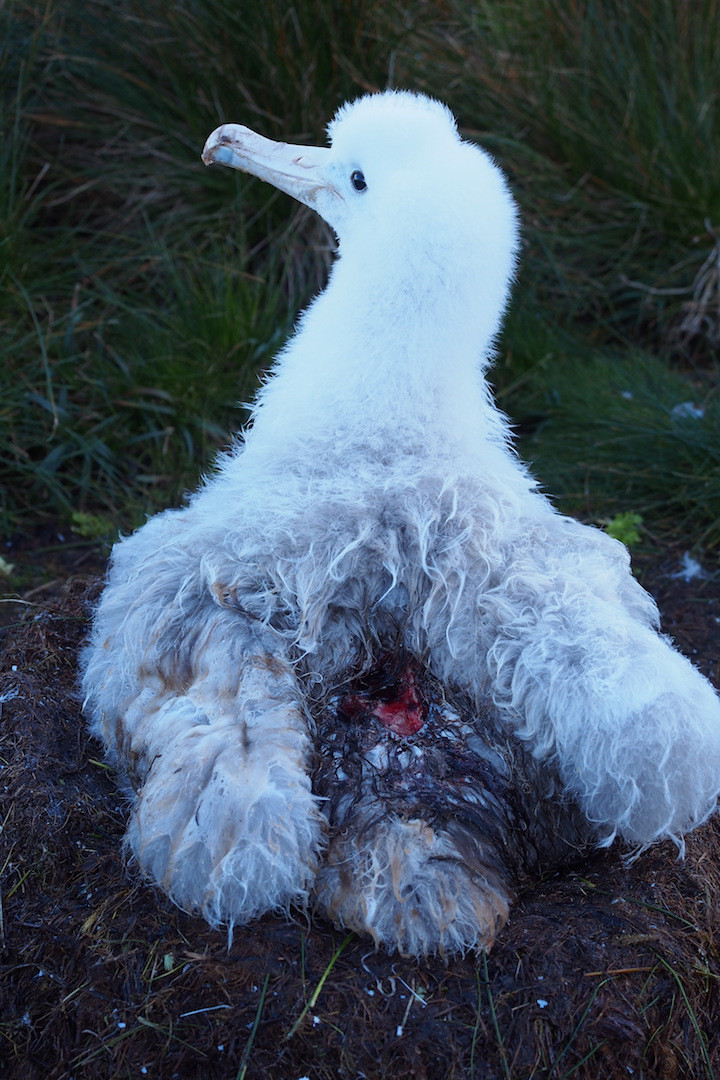
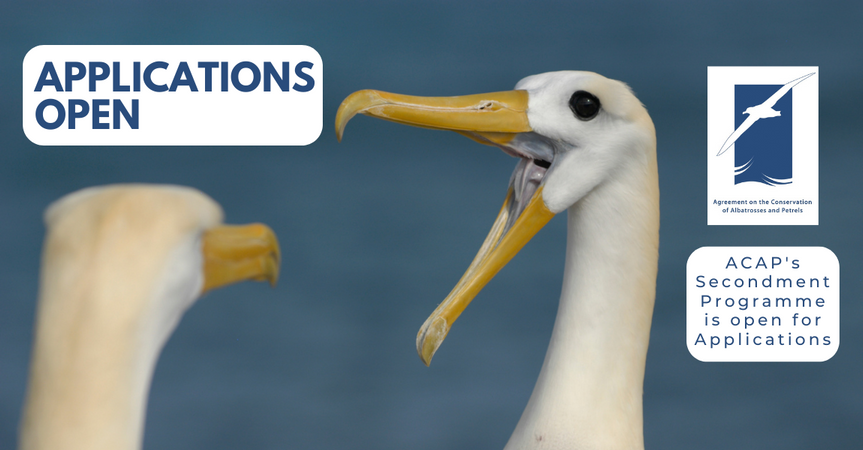
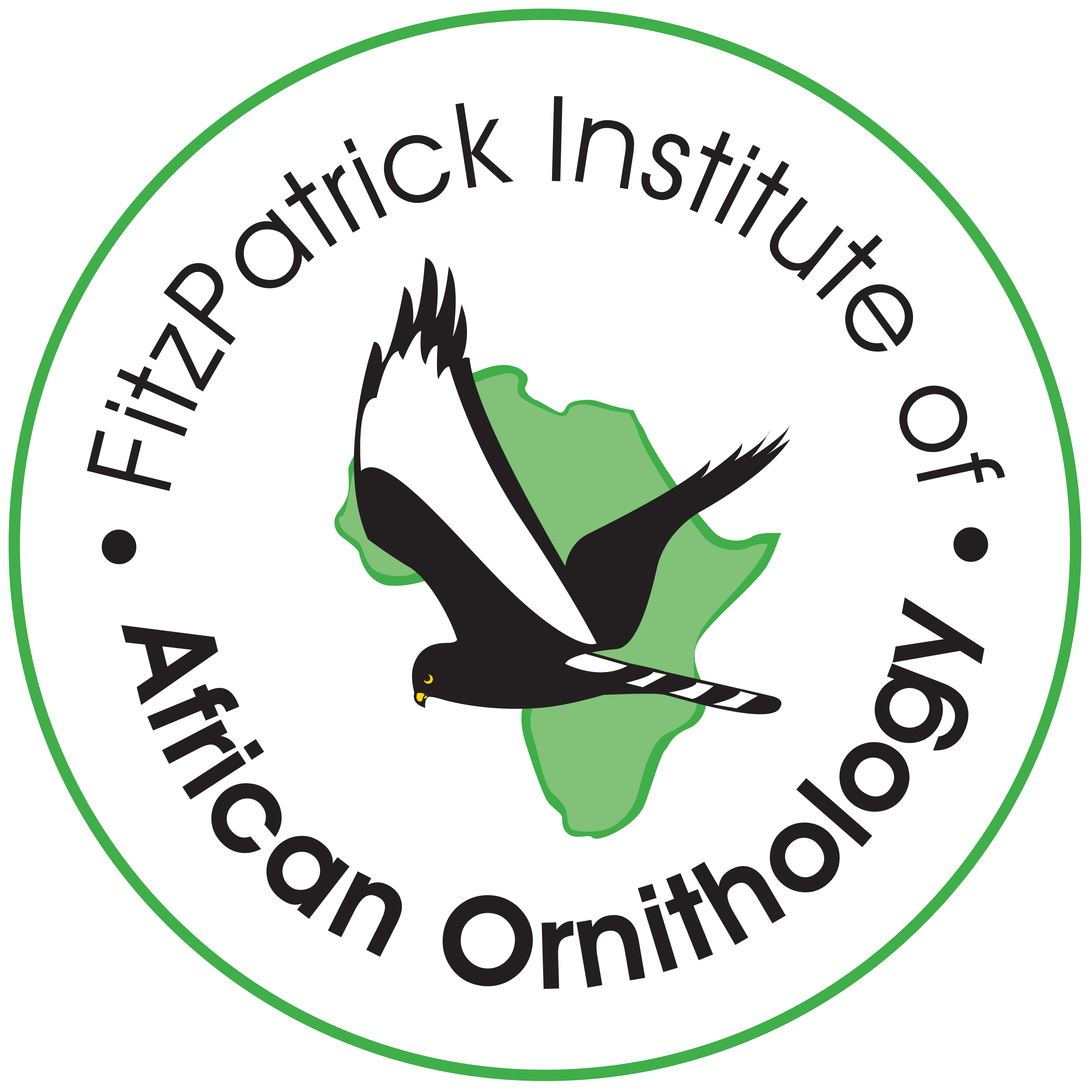
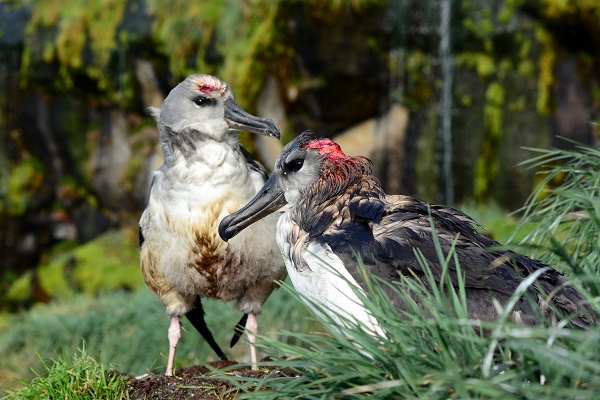
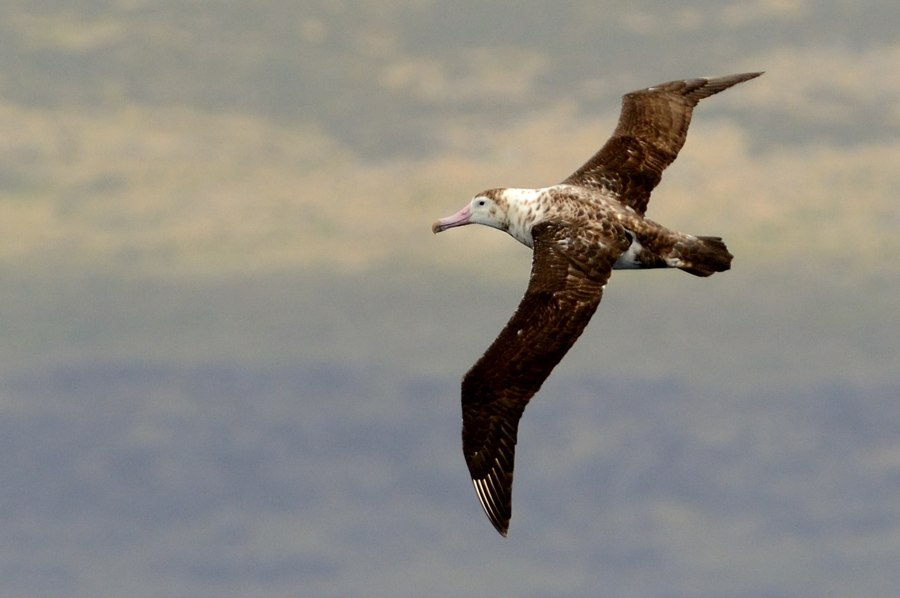 An Amsterdam Albatross off Amsterdam Island; photograph by Kirk Zufelt.
An Amsterdam Albatross off Amsterdam Island; photograph by Kirk Zufelt.